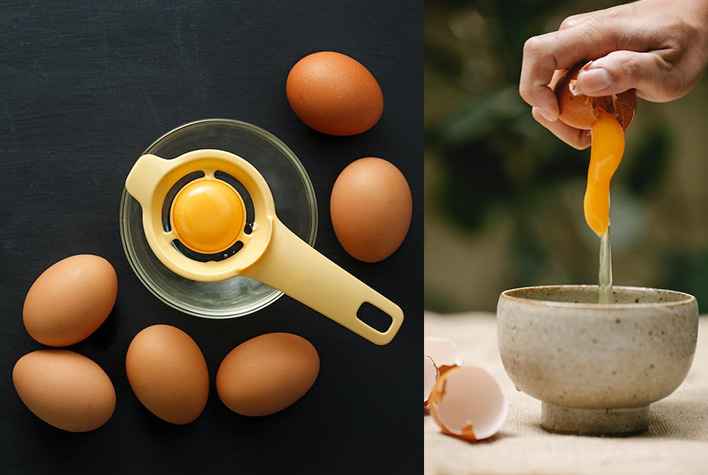
Bouncing back into Spring with Vitality
We are often asked what food groups are best for continued health and vitality. Our team of experts has put an extensive list of good foods to consider while bouncing back into Spring with vitality.
Choose a diet made of nutrient-rich foods. Nutrient-rich (or nutrient-dense) foods are low in sugar, sodium, starches, and bad fats. They contain a lot of vitamins and minerals and few calories. Your body needs vitamins and minerals, known as micronutrients. They nourish your body and help keep you healthy. They can reduce your risk for chronic diseases. Getting them through food ensures your body can absorb them properly.
Try to eat a variety of foods to get different vitamins and minerals. Foods that naturally are nutrient-rich include fruits and vegetables. Lean meats, fish, whole grains, dairy, legumes, nuts, and seeds also are high in nutrients.
Your path to improved health
You may not get all the micronutrients your body needs. South Africans tend to eat foods that are high in calories and low in micronutrients. These foods often also contain added sugar, sodium (salt), and saturated or trans fats. This type of diet contributes to weight gain. It can increase your risk of health issues, such as type 2 diabetes and heart disease. Many of us do not get enough of the following micronutrients.

Calcium
(Non-fat and low-fat dairy, dairy substitutes, broccoli, dark, leafy greens, and sardines)
Potassium
(Bananas, cantaloupe, raisins, nuts, fish, and spinach and other dark greens)
Fiber
(Legumes (dried beans and peas), whole-grain foods and brans, seeds, apples, strawberries, carrots, raspberries, and colourful fruit and vegetables)
Magnesium
(Spinach, black beans, peas, and almonds)
Vitamin A
(Eggs, milk, carrots, sweet potatoes, and cantaloupe)
Vitamin C
(Oranges, strawberries, tomatoes, kiwi, broccoli, and red and green bell peppers)
Vitamin E
(Avocados, nuts, seeds, whole-grain foods, and spinach and other dark leafy greens)
All the above foods are good choices. Below are suggestions for changing your diet to be more nutrient-rich.
Grains
Whole-grain foods are low in fat. They’re also high in fiber and complex carbohydrates. This helps you feel full longer and prevents overeating. Check the ingredient list for the word “whole.” For example, “whole wheat flour” or “whole oat flour.” Look for products that have at least 3 grams of fiber per serving. Some enriched flours have fiber but are not nutrient-rich.
Alternative grains to choose.
Rolled or steel cut oats, whole-wheat pasta, whole-wheat tortillas, whole-grain (wheat or rye) crackers, breads, and rolls, brown or wild rice, barley, quinoa, buckwheat, whole corn, and cracked wheat.
Fruits and vegetables
Fruits and vegetables naturally are low in fat. They add nutrients, flavour, and variety to your diet. Look for colourful fruits and vegetables, especially orange and dark green.

Alternative fruits and veggies to choose.
Broccoli, cauliflower, and brussels sprouts, leafy greens, such as chard, cabbage and bok choy, dark, leafy greens, such as spinach and kale, squash, carrots, sweet potatoes, turnips, and pumpkin, snap peas, green beans, bell peppers, and asparagus, apples, plums, mangos, papaya, pineapple, and bananas, blueberries, strawberries, cherries, pomegranates, and grapes, citrus fruits, such as grapefruits and oranges, peaches, pears, and melons, tomatoes and avocados.
Meat, poultry, fish, and beans, Beef, pork, veal, and lamb.
Choose low-fat, lean cuts of meat. Look for the words “round,” “loin,” or “leg” in their names. Trim outside fat before cooking. Trim any inside, separable fat before eating. Baking, broiling, and roasting are the healthiest ways to prepare these meats. Limit how often you eat beef, pork, veal, and lamb. Even lean cuts contain more fat and cholesterol compared to other protein sources. Chicken breasts are a good cut of poultry. They are low in fat and high in protein. Remove skin and outside fat before cooking. Baking, broiling, grilling, and roasting are the healthiest ways to prepare poultry. Fresh fish and shellfish should be damp and clear in colour. They should smell clean and have a firm, springy flesh. If fresh fish isn’t available, choose frozen or low-salt canned fish. Wild-caught oily fish are the best sources of omega-3 fatty acids. This includes salmon, tuna, mackerel, and sardines. Poaching, steaming, baking, and broiling are the healthiest ways to prepare fish.

Beans and other non-meat sources
Non-meat sources of protein also can be nutrient-rich. Try a serving of beans, peanut butter, other nuts, or seeds.
Alternative non-meat choices.
Lean cuts of beef, pork, veal, and lamb, turkey, chicken or turkey mince, salmon and other oily fish, haddock and other white fish, tuna, shrimp, mussels, scallops, and lobster (without added fat), legumes, such as beans, lentils, and chickpeas, Seeds and nuts, including nut butters.
Dairy and dairy substitutes
Choose skim milk, low-fat milk, or enriched milk substitutes. Try replacing cream with evaporated skim milk in recipes and coffee. Choose low-fat or fat-free cheeses.
Alternative dairy choices.
Low-fat, skim, nut, or enriched milk, like soy or rice, skim ricotta cheese in place of cream cheese, low-fat cottage cheese, string cheese, plain non-fat yogurt in place of sour cream.
Multi mineral and multi vitamin supplement TerraVIT PLUS
We hope that you have found this blog post educational, interesting, motivating and inspiring to bounce back into Spring with absolute vitality. Please to visit our website www.thrivosity.co.za and look at our recently launched Multi mineral and multi vitamin supplement TerraVIT PLUS.